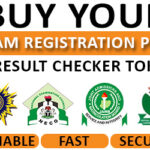This content is just an excerpt from the complete lesson note for Primary Six Third Term Lesson Note For Basic Technology. Check the link attached to download the complete lesson note << DOWNLOAD FILE >>
Week: ONE
Date:
Class: Basic Six
Subject: BST
Duration: 40 minutes
Topic: SAFETY AND ACCIDENTS
Sub topic(s):
- Meaning of Safety
- Causes of Accident and Objects that Causes Accident
- Prevention of Accident
- Some Safety Devices
Behavioural objectives: At the end of the lesson, pupils should be able to;
- Define safety;
- State two causes of accident;
- State some objects that causes accident;
- Mention three prevention of accident;
- List some safety devices.
Instructional material/Reference material: Basic Science and Technology for Primary six by P. Asun, T. Bajah et al.
Safety devices; Apron, Boots, Hand gloves, Eye shield, Reflective caution triangle
Building Background/ Connection to prior knowledge: The pupils are familiar with the topics.
INTRODUCTION
MEANING OF SAFETY
Safety means keeping yourself and others free from harm or danger. That’s being careful not to fall, bump or run into things.
MEANING OF ACCIDENT
Accidents are unplanned or unexpected events that happen to human beings. Accidents can happen everywhere, for example, in the schools, homes, roads and markets.
COMMON ACCIDENTS
- Falling objects
- Bruises
- Cuts
- Burns
- Poisoning
- Drowning
- Choking
- Electric Shock
CAUSES OF ACCIDENT
At home
- Running or playing football on a slippery floor.
- A leaking gas cylinder.
- Children playing with matches.
- Use of naked light near a petrol container.
- Careless use of boiling rings.
- Leaving water taps open when there is no water.
In the school
- Slippery football field.
- Use of naked electric wire in laboratories and classrooms.
- Failure to keep the school premises clean and tidy.
OBJECTS THAT CAUSE ACCIDENT
- Broken bottles or plastic
- Nail
- Knife
- Blade
- Broken chair or table
- Broken glass
- Naked wire
PREVENTION OF ACCIDENTS
At home
- Do not allow children to run around on slippery floors.
- Help old people to climb and descend staircases.
- Children should not operate gas cylinders.
- Keep all medicines out of reach of children.
- Disconnect all electrical appliances when not in use.
- Always lock water taps when not in use.
In the school
- Do not play on the waterlogged football field.
- Keep the school compound clean and tidy always.
- All electrical connections in the laboratory should be done under the supervision of the science teacher.
SAFETY DEVICES
- Fire extinguishers
- Apron
- Boots
- Hand gloves
- Eye shield or goggles
- Caution signs
- Seat belts
- Road signs -zebra crossing
- Face masks,
- Dust masks
- Hearing protection
Strategies & Activities
Step1 Teacher revises the previous topic
Step 2Teacher introduces the new topic.
Step3 Teacher endeavors to explain all the points to the pupils thoroughly.
Step 4Teacher welcomes pupils’ questions.
Step 5 Teacher evaluates the pupils.
Assessment& Evaluation
- Define safety and accident.
- List at least three objects (each) that cause accidents at home and in school.
- State three (3) causes of the accident (each) at home and in the school.
- List at least four (4) safety devices.
Summary: teacher goes over the topic once again to enhance better understanding.
Wrap-up [conclusion]: Teacher corrects and marks pupils’ notes.
To gain full access to the note: CLICK HERE >> DOWNLOAD FILE >>



